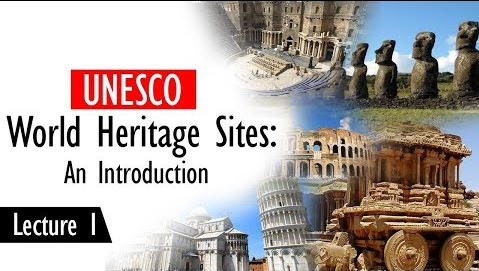Table of Contents
UNESCO
- The United Nations Educational, Scientific and Cultural Organization is a specialized agency of the United Nations (UN) based in Paris.
- Its declared purpose is to contribute to peace and security by promoting international collaboration in education, sciences, and culture in order to increase universal respect for justice, the rule of law, and human rights along with fundamental freedom proclaimed in the United Nations Charter.
- UNESCO has 193 member statesand 11 associate members.
CULTURAL SITES
- Agra Fort (1983)
- Ajanta Caves (1983)
- Archaeological Site of Nalanda Mahavihara at Nalanda, Bihar (2016)
- Buddhist Monuments at Sanchi(1989)
- Champaner-Pavagadh Archaeological Park (2004)
- Chhatrapati Shivaji Terminus (formerly Victoria Terminus) (2004)
- Churches and Convents of Goa(1986)
- Elephanta Caves (1987)
- Ellora Caves (1983)
- Fatehpur Sikri (1986)
- Great Living Chola Temples (1987,2004)
- Group of Monuments at Hampi (1986)
- Group of Monuments at Mahabalipuram (1984)
- Group of Monuments at Pattadakal (1987)
- Hill Forts of Rajasthan (2013)
- Historic City of Ahmadabad (2017)
CULTURAL SITES
- Humayun’s Tomb, Delhi (1993)
- Khajuraho Group of Monuments (1986)
- Mahabodhi Temple Complex at Bodh Gaya (2002)
- Mountain Railways of India (1999,2005,2008)
- Qutb Minar and its Monuments, Delhi (1993)
- Rani-ki-Vav (the Queen’s Stepwell) at Patan, Gujarat (2014)
- Red Fort Complex (2007)
- Rock Shelters of Bhimbetka (2003)
- Sun Temple, Konârak (1984)
- Taj Mahal (1983)
- The Architectural Work of Le Corbusier, an Outstanding Contribution to the Modern Movement (2016)
- The Jantar Mantar, Jaipur (2010)
- Victorian Gothic and Art Deco Ensembles of Mumbai (2018) NATURAL
- Great Himalayan National Park Conservation Area (2014)
- Kaziranga National Park (1985)
- Keoladeo National Park (1985)
- Manas Wildlife Sanctuary (1985)
- Nanda Devi and Valley of Flowers National Park(1988,2005)
- Sundarbans National Park (1987) • Western Ghats(2012)
Mixed
- Khangchendzonga National Park (2016)
WORLD HERITAGE SITE
- World Heritage is the designation for places on Earth that are of outstanding universal value to humanity and as such, have been inscribed on the World Heritage List to be protected for future generations to appreciate and enjoy.
- Heritage is our legacy from the past, what we live with today, and what we pass on to future generations. Our cultural and natural heritage are both irreplaceable sources of life and inspiration.These are legally protected by international treaties. The sites are judged important to the collective interests of humanity.
- As of July 2018, a total of 1,092 World Heritage Sites (845 cultural, 209 natural, and 38 mixed properties) exist across 167 countries. Italy, with 54 sites, has the most of any country, followed by China (53), Spain (47), France (44), Germany (44), India (37), and Mexico (35)
CULTURAL CRITERIA
- “represents a masterpiece of human creative genius and cultural significance”
- “exhibits an important interchange of human values, over a span of time, or within a cultural area of the world, on developments in architecture or technology, monumental arts, town-planning, or landscape design”
- “to bear a unique or at least exceptional testimony to a cultural tradition or to a civilization which is living or which has disappeared”
- “is an outstanding example of a type of building, architectural, or technological ensemble or landscape which illustrates a significant stage in human history”
- “is an outstanding example of a traditional human settlement, landuse, or sea-use which is representative of a culture, or human interaction with the environment especially when it has become vulnerable under the impact of irreversible change”
- “is directly or tangibly associated with events or living traditions, with ideas, or with beliefs, with artistic and literary works of outstanding universal significance”
NATURAL CRITERIA
- “contains superlative natural phenomena or areas of exceptional natural beauty and aesthetic importance”
- “is an outstanding example representing major stages of Earth’s history, including the record of life, significant on-going geological processes in the development of landforms, or significant geomorphic or physiographic features”
- “is an outstanding example representing significant on-going ecological and biological processes in the evolution and development of terrestrial, fresh water, coastal and marine ecosystems, and communities of plants and animals”
- “contains the most important and significant natural habitats for insitu conservation of biological diversity, including those containing threatened species of outstanding universal value from the point of view of science or conservation






















 WhatsApp
WhatsApp